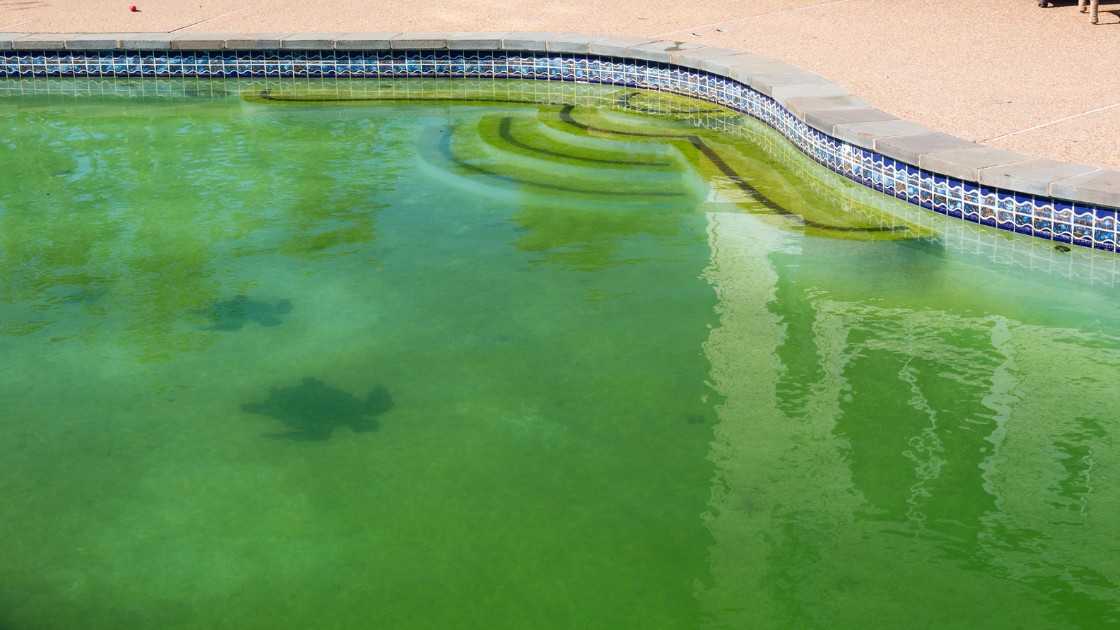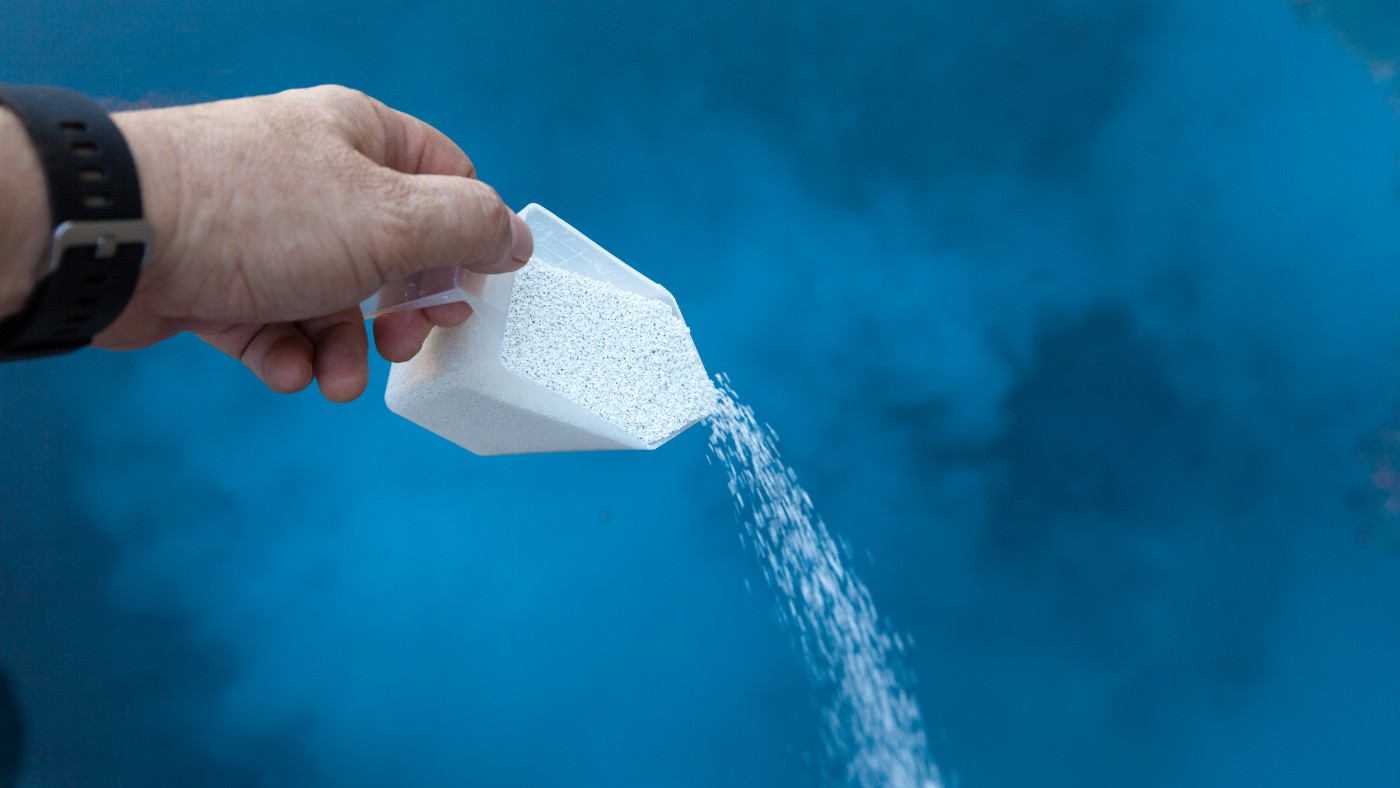
The Importance of Free Chlorine
Free chlorine plays a crucial role in maintaining the safety and cleanliness of your pool water. As the active form of chlorine, it is responsible for killing bacteria, viruses, and other harmful microorganisms that can thrive in pool water. Unlike combined chlorine, which has already reacted with contaminants and is less effective, free chlorine remains available to continuously sanitize the water, ensuring that it stays clear and safe for swimming.
Maintaining the ideal free chlorine level is essential for effective pool sanitization. The recommended range for free chlorine is between 1-3 parts per million (ppm). Within this range, free chlorine is potent enough to eliminate harmful pathogens without causing irritation to swimmers or damaging pool surfaces. If the free chlorine level drops below 1 ppm, your pool water may become unsanitary, increasing the risk of waterborne illnesses and the growth of algae. On the other hand, levels above 3 ppm can lead to issues such as strong chlorine odors and discomfort for swimmers.
Regularly testing and adjusting the free chlorine level in your pool is key to ensuring that it remains within the optimal range. This balance not only helps to protect the health of those using the pool but also preserves the clarity and overall quality of the water. By keeping a close eye on your free chlorine levels, you can enjoy a pool that is both safe and inviting all season long.
What is Chlorine Shock?
Chlorine shock refers to a high dose of chlorine added to the pool to quickly raise the free chlorine levels. This process is crucial for killing bacteria, algae, and other organic contaminants that can cloud your pool water and make it unsafe for swimming. Common types of chlorine shock include calcium hypochlorite and sodium hypochlorite (liquid chlorine), which are known for their powerful oxidizing properties.
Chlorine Shock Options
There are two main types of chlorinated shock commonly used by pool owners: liquid chlorine, calcium hypochlorite (cal-hypo), and lithium hypochlorite. Each type of shock has unique characteristics and benefits that cater to different pool maintenance needs. Liquid chlorine, often sold in a liquid form, is popular for its affordability and effectiveness. However, it has a high pH level, which means it can increase the pool’s pH and alkalinity, potentially requiring additional balancing chemicals. One downside of liquid chlorine is that it can bleach out pool surfaces if not properly diluted before it is applied, making it essential to carefully follow usage instructions.
Calcium hypochlorite, commonly referred to as cal-hypo, is a powdered form of chlorine shock that is available in different strengths. Like liquid chlorine, cal-hypo has a high pH level, which can also raise the pool's pH. However, cal-hypo adds calcium to the water, which can be beneficial in certain circumstances but may contribute to scaling if calcium levels in the pool are already high. This type of shock is widely used because of its effectiveness in killing bacteria and algae, making it a go-to option for many pool owners.
Each of these chlorinated shocks serves a specific purpose, and the choice of which to use depends on factors like pool type, existing water chemistry, and the specific needs of the pool at any given time.
What is Non-Chlorine Shock?
In addition to the chlorinated shock options, non-chlorine shock presents a chlorine-free alternative that has gained popularity for its effectiveness and gentler impact on pool water chemistry. Non-chlorine shock is a powerful oxidizer that quickly dissolves in the water, leaving no residue behind. This characteristic makes it an excellent choice for pool owners who prefer a cleaner, more straightforward application process. One of the key advantages of non-chlorine shock is that it doesn’t raise the chlorine levels in your pool, making it a safer option that allows swimmers to get back into the water much sooner after treatment—often within 15 minutes. API Water’s E-Z POOL® and OXY SPLASH™ are excellent examples of non-chlorinated shock.


Non-chlorine shock is particularly effective in oxidizing and eliminating organic contaminants such as sweat, oils, and other debris that can accumulate in pool water over time. By targeting these contaminants, non-chlorine shock helps to prevent the growth of algae and maintains a balanced and clear pool environment. Additionally, because it doesn’t contribute to the combined chlorine levels that cause unpleasant odors and eye irritation, non-chlorine shock is an ideal choice for regular maintenance, especially in pools that are frequently used or located indoors where ventilation might be limited.
This gentler approach to shock treatment makes non-chlorine shock not only efficient but also versatile, as it can be used in various pool types, including those with sensitive surfaces or in situations where minimizing chemical exposure is a priority. For pool owners looking to maintain water clarity and freshness without the added chlorine, non-chlorine shock offers a reliable and user-friendly solution.
Is Chlorine Shock Better Than Non-Chlorine Shock?
The choice between chlorine and non-chlorine shock depends on your specific needs. Chlorine shock is best for tackling severe algae growth issues and ensuring the destruction of harmful pathogens. In contrast, non-chlorine shock is ideal for routine maintenance, especially for indoor pools or hot tubs where odor and irritation are concerns.
Can You Use Chlorine and Non-Chlorine Shock Together?
While both types of shock have their place in pool maintenance, they should generally not be used simultaneously. Doing so can lead to unpredictable chemical reactions, potentially affecting the pool’s pH and chlorine levels. It's best to alternate between the two based on the immediate needs of your pool.
When Should You Shock Your Pool?


Regularly shocking your pool is an essential part of maintaining clean and safe water.
Shocking your pool isn’t just a reactive measure; it’s also a proactive one. Regular shock treatments help prevent algae growth, which can turn your pool green and make the water unsafe for swimming. Algae can thrive in warm, sunny conditions, especially if the pool’s chlorine levels are not adequately maintained. By shocking your pool at least once a week, or more frequently during periods of heavy use or high temperatures, you can keep algae at bay and ensure that your pool water remains crystal clear.
In pools with a high bather load, such as those in commercial settings or during pool parties, the organic contaminants introduced by swimmers can quickly overwhelm the pool’s filtration and sanitizing systems. In such cases, it’s advisable to shock the pool more often, possibly even after each event, to ensure that the water stays safe for the next use.
By keeping a close eye on your pool’s chlorine levels and maintaining a consistent shock schedule, you can enjoy a pool that is not only visually appealing but also safe and comfortable for all swimmers.
Benefits of Regular Shocking
Regularly shocking your pool is a vital aspect of maintaining a clean, safe, and enjoyable swimming environment. One of the primary benefits of regular shocking is its ability to prevent algae growth. Algae can quickly turn your pool water green, making it uninviting and potentially hazardous. By shocking your pool on a consistent basis, you disrupt the conditions that allow algae to thrive, ensuring that your water remains clear and sparkling.
In addition to preventing algae, regular shocking also plays a crucial role in reducing eye irritation and skin problems caused by chloramines. Chloramines form when free chlorine combines with organic contaminants such as sweat, oils, and urine. These compounds are less effective at sanitizing the water and are responsible for the strong chlorine smell often associated with pools. They can also cause discomfort, leading to red eyes and itchy skin for swimmers. By shocking the pool, you break down these types of chloramines, restoring the effectiveness of the free chlorine and creating a more pleasant swimming experience.
Consistent shocking can also extend the life of your pool equipment. Over time, organic contaminants and algae can accumulate in your pool’s filtration system, leading to clogs and reduced efficiency. By regularly shocking your pool, you help to eliminate these contaminants before they have a chance to build up, thereby reducing the strain on your pool’s pump, filter, and other equipment. This proactive approach can save you money in the long run by minimizing the need for repairs and extending the lifespan of your pool’s components.
Making regular shocking a part of your pool maintenance routine is essential not only for keeping your pool water clean and safe but also for protecting your swimmers’ comfort and your pool’s longevity. By staying on top of your shock schedule, you can enjoy a healthier, clearer, and more enjoyable pool throughout the season.
How to Apply Chlorine and Non-Chlorine Shock

When it comes to applying shock to your pool, safety and precision are key. Whether you’re using chlorine or non-chlorine shock, it’s essential to follow the product's label instructions for application and dosage.
Application Process:
- For chlorine shock, such as calcium hypochlorite or liquid chlorine, consult the product label. You may need to dissolve the shock in a bucket of water before slowly adding it to the pool. This helps prevent damage to pool surfaces and ensures even distribution. Always ensure the pump is running to circulate the shock throughout the pool.
- Non-chlorine shock, which often comes in a powdered form, is generally easier to apply directly to the pool water. It dissolves quickly and doesn’t leave residue, making it a convenient option for regular maintenance.
Follow Manufacturer’s Instructions:
Regardless of the type of shock you’re using, always follow the specific dosing instructions provided by the manufacturer. These instructions are tailored to ensure that you add the correct amount of shock based on your pool size and current water conditions.
After Application:
After applying the shock, it’s advisable to run your pool pump and filter for several hours to help distribute the chemicals evenly and ensure that they reach all areas of the pool. This step is critical for effective treatment, whether you’re using chlorine or non-chlorine shock.
By following these guidelines, you can safely and effectively shock your pool, maintaining crystal-clear water and a safe swimming environment.
Common Mistakes to Avoid

When it comes to maintaining your pool, avoiding common mistakes during the shocking process is crucial to ensuring both safety and effectiveness. One of the most frequent errors pool owners make is not following the manufacturer’s dosing instructions. Each type of shock has specific guidelines for how much to use based on the size of your pool and the current water conditions. Failing to adhere to these instructions can result in over-shocking or under-shocking your pool. Over-shocking can lead to excessively high chlorine levels, which may cause skin irritation, damage to pool surfaces, and even equipment corrosion. On the other hand, under-shocking may leave your pool inadequately sanitized, allowing bacteria, algae, and other contaminants to thrive.
Another critical mistake to avoid is neglecting to wear the recommended protective clothing and eyewear on the product's label instructions.
Taking these precautions helps to ensure that you can apply the shock safely and without harm.
Finally, not testing your pool water weekly is a common oversight that can lead to imbalanced water chemistry. Regular water testing is essential for monitoring the levels of chlorine, pH, alkalinity, and other important factors in your pool. Without consistent testing, you may not realize when your pool’s chemistry is out of balance, which can diminish the effectiveness of your shock treatments and lead to problems such as cloudy water, algae growth, and equipment damage. By making water testing a regular part of your pool maintenance routine, you can catch imbalances early and adjust your treatments accordingly to maintain optimal water quality.
Avoiding these common mistakes will help you keep your pool water safe, clear, and well-maintained, ensuring that your pool remains a source of enjoyment all season long.
Final Thoughts on Chlorinated vs Non-chlorinated Shock
Chlorinated shock is undeniably an essential part of pool maintenance, providing a powerful tool for eliminating bacteria, algae, and other harmful contaminants that can compromise the safety and clarity of your pool water. However, it's important to recognize that chlorinated shock is not the only option available. Non-chlorine shock serves as a gentler alternative, offering pool owners a way to oxidize organic contaminants without raising chlorine levels. This makes non-chlorine shock particularly beneficial for routine maintenance, especially in situations where quick water recovery and minimal downtime are priorities.
One of the advantages of non-chlorine shock is that it can be used in conjunction with chlorinated shock as part of a comprehensive pool care regimen. For instance, while chlorinated shock may be employed to tackle severe contamination or after a high bather load, non-chlorine shock can be used regularly to maintain water clarity and prevent the buildup of organic matter. This combination approach allows pool owners to balance the need for powerful disinfection with the benefits of a gentler, less invasive treatment.
